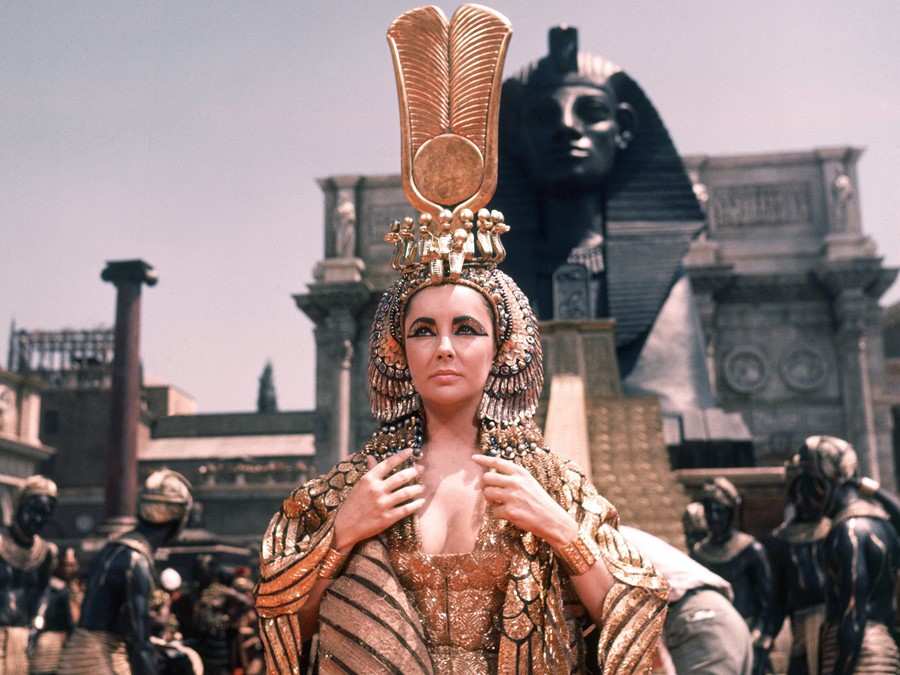The 1963 film broke records for costume changes and budget, and Elizabeth Taylor is breathtaking throughout its four hours in performance and appearance
It’s been more than half a century since its 1963 premiere, and yet the sheer magnitude of Joseph L. Mankiewicz’s Cleopatra is such that The New York Times’ assertion, then, that it was “one of the great epic films of our day” still rings true. It is as full as a film could be: the narrative never dulls, the costumes are exquisite, the characterisations are profound and, of course, it is four hours long.
While in theory Cleopatra is a tragic and triangular love story depicting the tangle of relationships shared between the ancient Egyptian Queen (played by Elizabeth Taylor) and Roman generals Julius Caesar (Rex Harrison) and Mark Antony (Richard Burton), in practice, it is a paean to Taylor herself. She was permitted a record-breaking costume budget of $194,800 (£123,000) and every penny was well spent. To honour the anniversary of her death last month, we examine the legacy of Mankiewicz’s cinematic immortalisation of one the fiercest women ever to have lived.
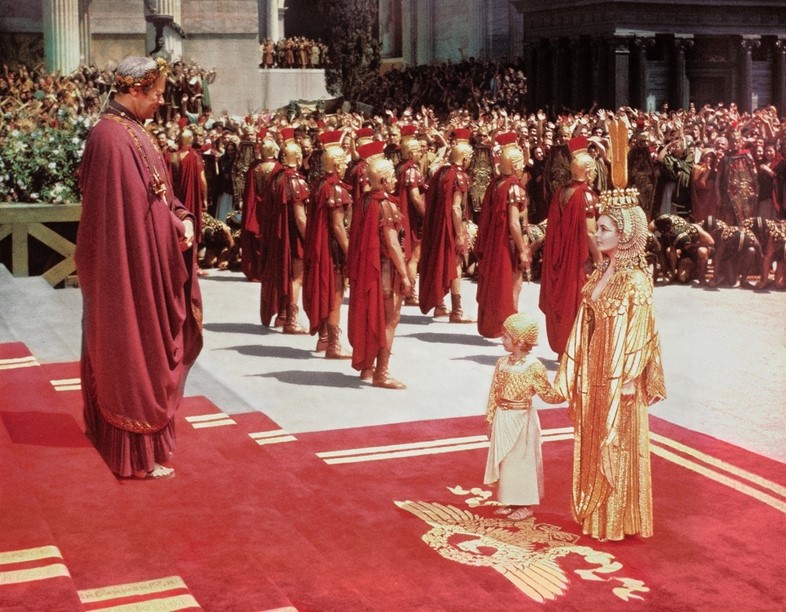
1. Learn how to make an entrance
The first time we see Cleopatra she rolls out of a rug and onto the floor wearing a chiffon dress in the colours of the Roman uniform: red and white. Here she is making her own political power clear to Caesar. Later, upon visiting Rome, Cleopatra arrives atop a giant model of the Great Sphinx of Giza, dressed in a 24-carat gold cape designed to look like the wings of a phoenix. When Cleopatra travels to see Antony, she arrives on a gold ship with red sails – again asserting her status. It is lavishly decorated with gold statues and traditional Egyptian sculptures, a veiled throne and she’s wearing an embellished blue ensemble. Through each entrance Cleopatra is communicating either her power, beauty, and divinity – or all three.
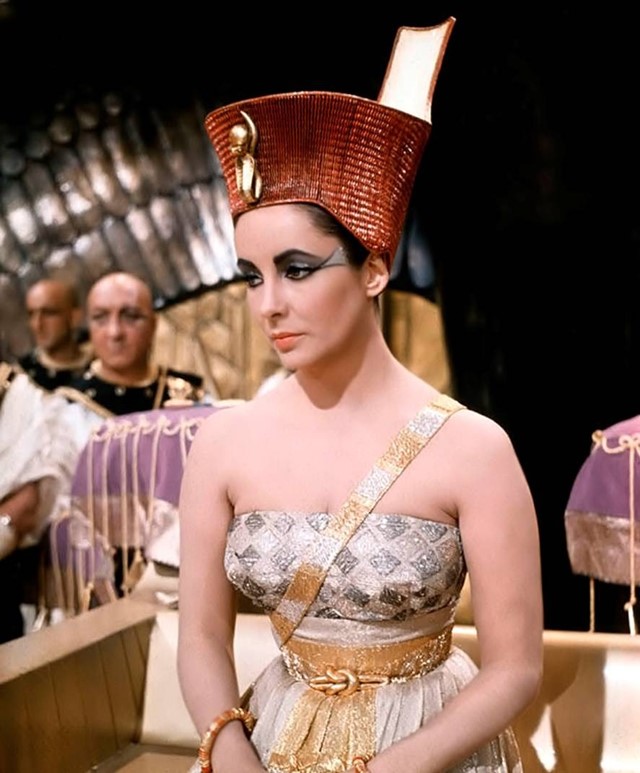
2. Wear your heart on your sleeve
Cleopatra struggles to find balance between “politics and passion” – head and heart – in a man’s world; a struggle that transfers into her clothing. She uses her clothes as armour, wearing similar colours to Caesar and Antony, or purple to suggest her royalty. Her clothes, however, are also her emotional giveaway, indicating her mood and desires. During emotional scenes, she dresses and surrounds herself with soft pastel hues. She wears a palette of red or pink during romantic or passionate interactions. And, for her final moments alive where she is her most vulnerable, candid and human, her attire is simple in colour and unembellished – significantly, this is the film’s longest period without an outfit change, reminding us that beneath Cleopatra the Pharaoh is a human being.
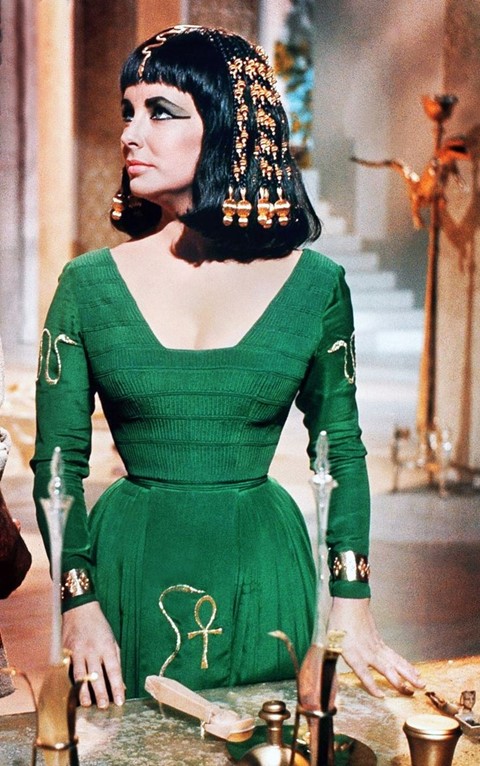
3. If you’ve got it, flaunt it
The costume of Cleopatra is unmistakable: gold, heavy adornments, lavish headdresses, dramatic makeup. The film honours this and then some, providing Taylor with 65 costume changes and showing off Cleopatra’s imitable beauty and style at every opportunity. One notable example is during a scene in which she and Marc Antony are arguing. Despite it lasting only a couple of minutes, Cleopatra appears in three different outfits with accompanying hair transformations. First she wears red, pink and gold with curled sculpted hair and a gold headdress; then a white and gold ensemble, finished with an extravagant leaf halo headdress and gold beads in her hair; and finally a flowing white and black ensemble with her hair in a loose up-do.
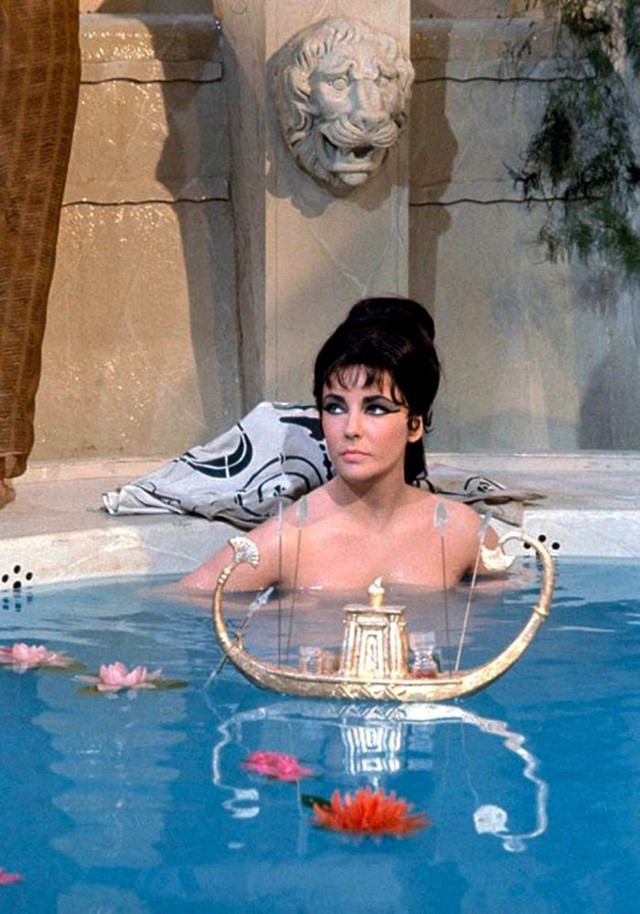
4. Harness your inner goddess
Egyptian Goddesses are known for being incredibly powerful, sensual, protective and as figures of superior beauty. Cleopatra identified as a goddess not only through divinity – exclaiming “I am Isis” to Caesar – but also via nature’s goddess, Mother Earth, as she likens herself and all women to the “Mother” River Nile. Throughout the film we see her connecting to her inner goddess through sensual acts such as bathing and being pampered, as well as surrounding herself with women and flowers. Sartorially, Cleopatra also embraces her goddess: dressing in flowing chiffon with opulent gold accessories, wearing imitations of Isis’ famous throne headdress and gold wings, as well as cobra-embroidered dresses (a symbol of Isis).
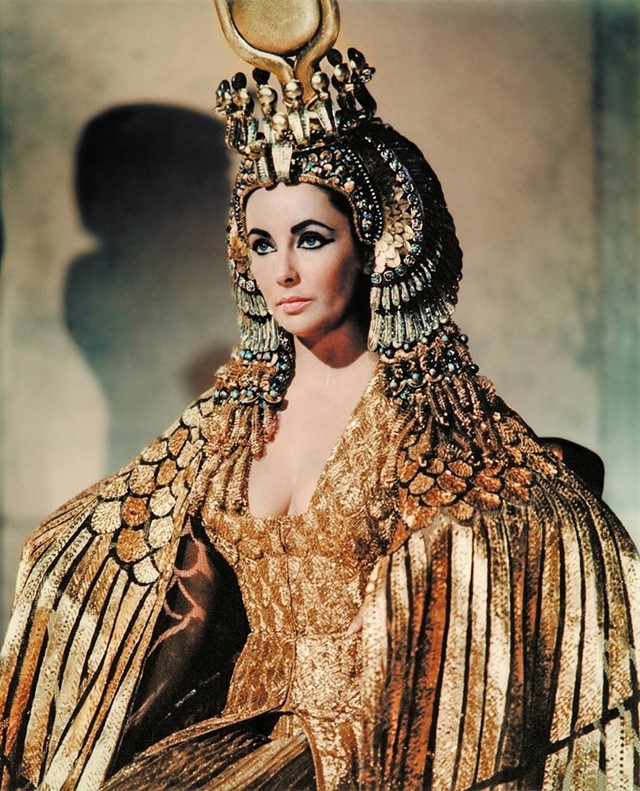
5. Never let others make you feel inferior
In the film we see Cleopatra struggling to find a stable place between royalty, motherhood and being a wife and lover. Despite recognising her own power, resilience, loyalty and drive, Cleopatra’s biological sex prohibits others and men from not only seeing her as superior, but equal: both Caesar and Antony protest when they are first asked and then demanded to kneel before her. Both men separate Cleopatra’s identities: she is either a woman and their lover, or she is the Egyptian Queen – never both. Sadly it is only in death that she is presented as equal. Lying on an altar, dressed in the gold phoenix wings with throne headdress and symbols crossed over her chest, her trusted servant Charmion responds to the question “Was this well done of your lady?” with “As befitting the last of so many noble rulers”.
